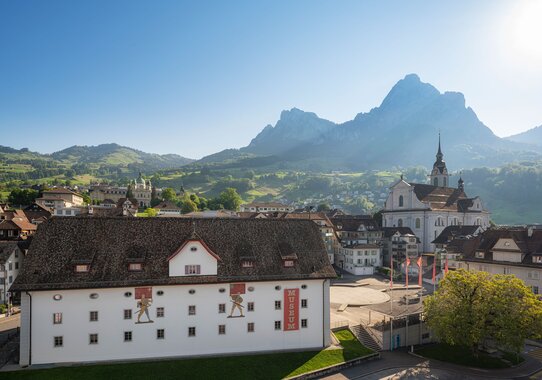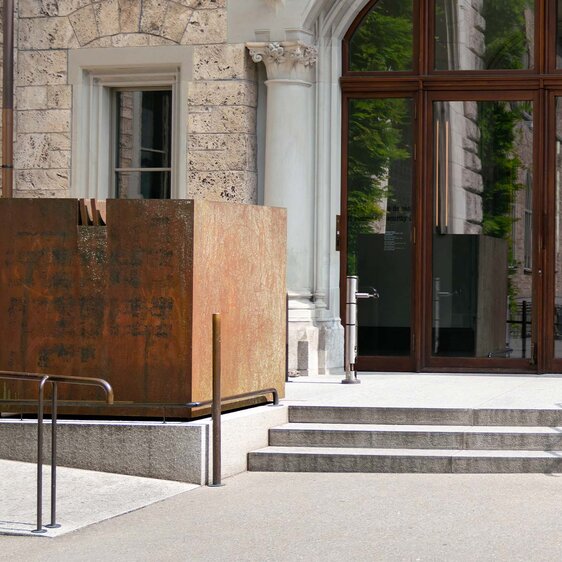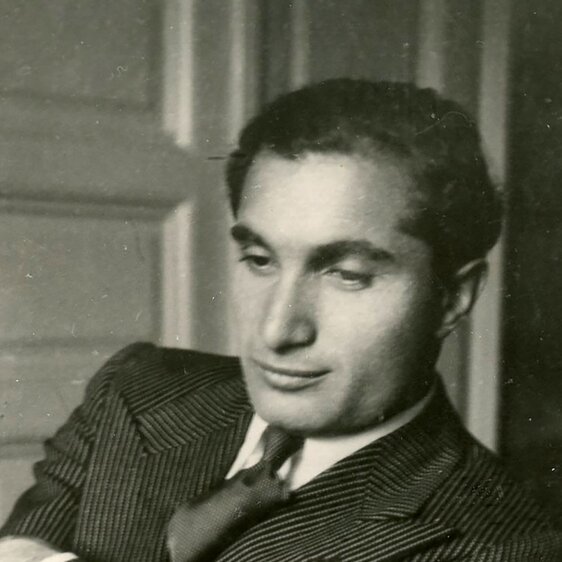Forum of Swiss History Schwyz
| 21.4.2023 - 7.1.2024
Anne Frank’s diary became a global phenomenon in the wake of the Holocaust. Chronicling 735 days of fear, hunger and the day-to-day routine for eight Jews in hiding from the Nazis in Amsterdam, the diary is now famous throughout the world. However, few people are aware of the extent to which the Frank family and the dissemination of Anne’s diary are associated with Switzerland.
Edith, Margot and Anne Frank, and four other people with whom they’d been in hiding, didn’t make it back from the concentration camps. Only Otto Frank survived, returning from Auschwitz in 1945. As a stateless person he eventually settled in Switzerland, and it was from here that he launched his quest to take the legacy of his daughter Anne to the whole world. Her diaries are a plea for more humanity and tolerance, and they have become part of world literature.
The history of the Frank family is representative of the fate of countless Jewish families during World War II: exodus, flight, deportation, murder. Keeping alive the memory of the Holocaust became increasingly important in the mid-1990s. The exhibition interweaves the flight of Anne Frank’s family to Amsterdam with the lives of her relatives in exile in Basel. The parallel stories of the two branches of the family, and how their lives unfolded during World War II, makes the viewer much more keenly aware of the specific threats to Jews in two small European nations.
The exhibition’s central artefact is the diary of Anne Frank, which is presented in facsimile with displays and exhibits adding further detail to her accounts of life in hiding. It paints a picture of the conditions under which the texts were created, and examines the history of their impact and appeal. Using objects, photos and documents, the exhibition gives a glimpse into the family’s life. Thanks to a partnership with the Anne Frank Fonds Basel and the Familie Frank Zentrum Frankfurt, which holds the family archives, the exhibition presents an authentic narrative and opens up a vista of day-to-day life at a particular point of history, also covering refugee policy and refugee assistance in Switzerland during World War II.
More about the exhibition






